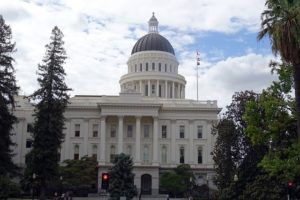 A mere 30 years ago, California realized the benefit of car breathalyzer (ignition interlock) technology to keep DUIs down. It was the 1980s, and as California is best known for, the state legislators passed the forward-thinking Farr-Davis Safety Act of 1986. This act established the basis the current California ignition interlock pilot program in four counties in the state, as well as set an example to follow for the rest of the U.S. Since then, California has tweaked the pilot program and statewide regulations resulting in the state’s current ignition interlock requirements:
A mere 30 years ago, California realized the benefit of car breathalyzer (ignition interlock) technology to keep DUIs down. It was the 1980s, and as California is best known for, the state legislators passed the forward-thinking Farr-Davis Safety Act of 1986. This act established the basis the current California ignition interlock pilot program in four counties in the state, as well as set an example to follow for the rest of the U.S. Since then, California has tweaked the pilot program and statewide regulations resulting in the state’s current ignition interlock requirements:
- Judges must order an interlock if a DUI offender is caught driving on a DUI-suspended license.
- Repeat DUI offenders can resume driving legally once they’ve served half of their suspension, and only if an interlock is installed.
- An interlock may be ordered by the judge for any DUI, but there is no mandatory requirement.
In the four pilot program counties a California ignition interlock is legally required for all DUI offenses, even first-time offenses.
We realize that the most populated areas of the state would be the initial focus of an interlock program, especially when the devices were relatively unknown. Today, we have data and statistics that validate the effectiveness of the devices. Plus, rural areas have slightly more drunk driving fatalities than urban areas. California has major cities and rural areas, all of which deserve the same protection from drunk drivers.
California extended the pilot program in late 2015 in order to review the facts, leaving it to expire in mid-2017. Before that happens, all-offender legislation has been introduced this year, and has already passed though the state senate. It is currently being reviewed by the California assembly, with hopes of a resolution before the 2016 legislative session ends on August 31.
TAKE ACTION NOW: Voice your support for passing SB-1046 (California ignition interlock expansion) to your California Representative and the Governor!

 Maryland DUI Arrests Fall While Fatalities Rise?
Maryland DUI Arrests Fall While Fatalities Rise?